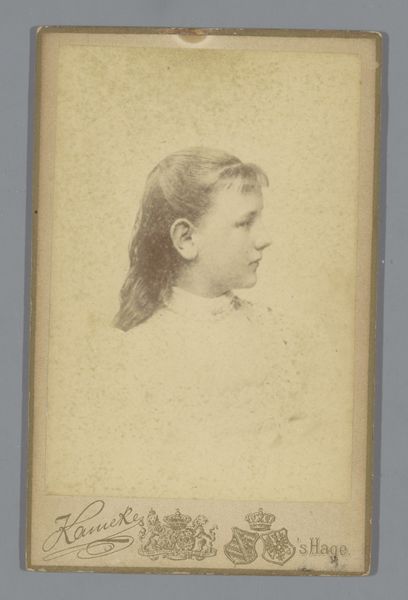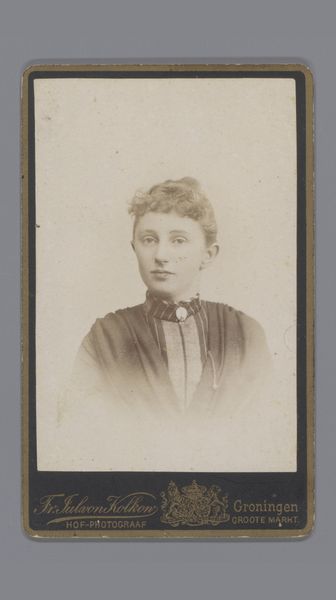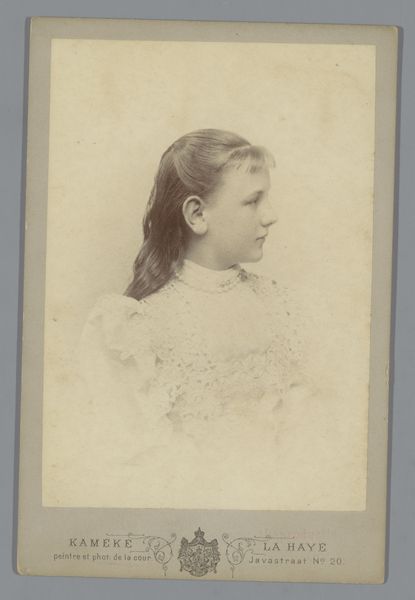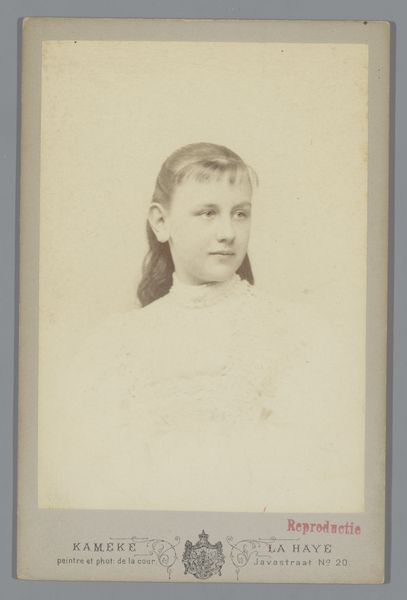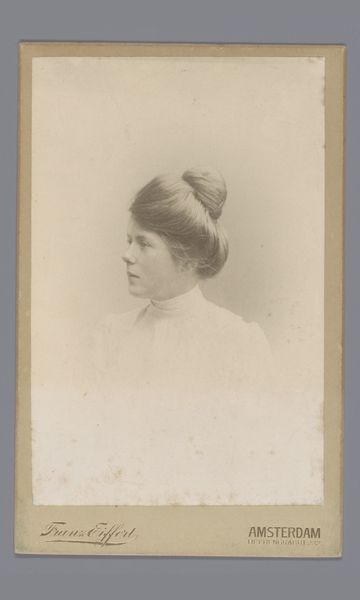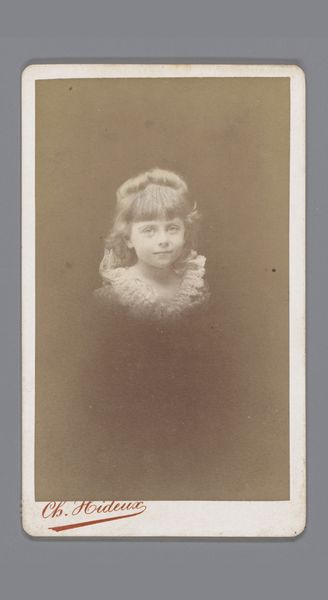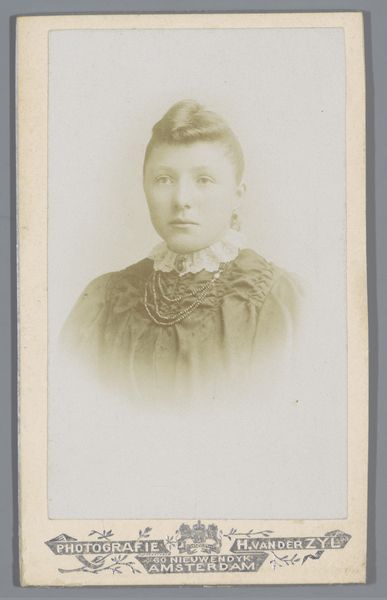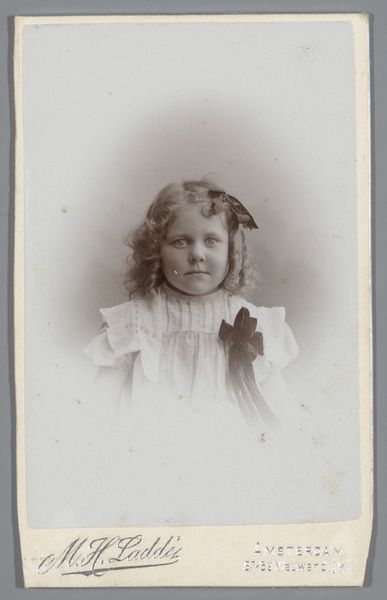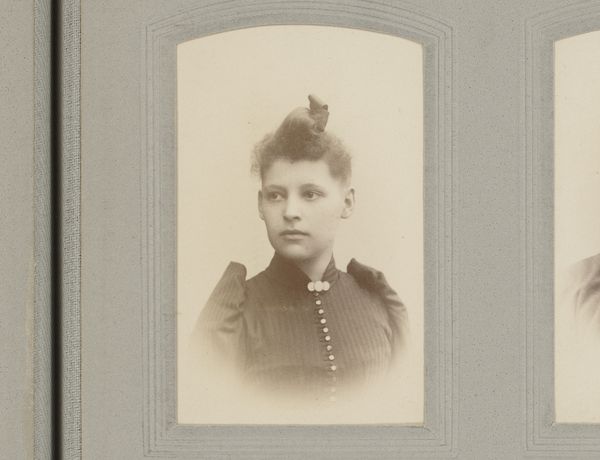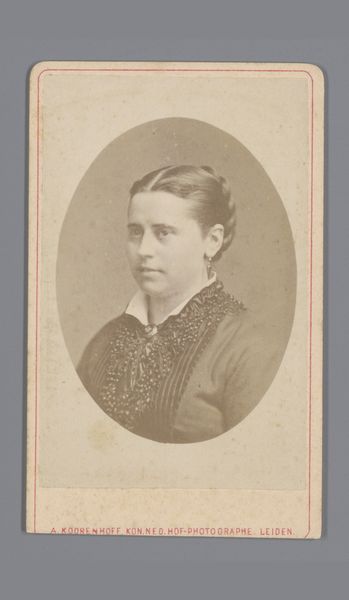
#
aged paper
#
light pencil work
#
homemade paper
#
pale palette
#
light coloured
#
personal sketchbook
#
watercolour bleed
#
watercolour illustration
#
design on paper
#
watercolor
Dimensions: height 104 mm, width 63 mm
Copyright: Rijks Museum: Open Domain
Editor: Here we have Leon Joliot’s “Portret van een onbekend kind”, created sometime between 1874 and 1890. The soft watercolor tones give it such a delicate feel. What strikes you when you look at this? Curator: The material history here is fascinating. Consider the paper itself. The label 'aged paper' suggests not just age, but the specific process and materials used in paper production at the time. Was it linen or wood pulp based? And the "light pencil work" and "watercolor bleed" – these aren't just stylistic choices, but clues to the artist's labor. How long did it take to achieve this effect? Editor: That’s interesting! I hadn’t thought about the labor behind it. Curator: Absolutely! This was during a time of great social and economic change. Look at the child's collar, presumably lace. That represents hours of meticulous, likely underpaid, labor, contrasting with the presumed social standing of the child portrayed. This 'watercolor illustration' isn't just a portrait, but also evidence of class structures. And how do the "pale palette" and "light coloured" paints, signify wealth through their accessiblity to purchase. The labour involved in making both materials are important factors when analysing. Editor: So, you’re saying the art itself becomes evidence of these inequalities? Curator: Precisely. Even the "personal sketchbook" aspect becomes relevant. Is this a commissioned portrait, or was Joliot simply sketching for practice? Either way, it reflects the social and economic factors influencing artistic creation. Editor: That’s a really compelling way of looking at it! I'll never see a simple portrait the same way again. Curator: And I've seen new details on the labour of watercolor through your comments too. It has definitely brought a new meaning to this child’s portrait.
Comments
No comments
Be the first to comment and join the conversation on the ultimate creative platform.
